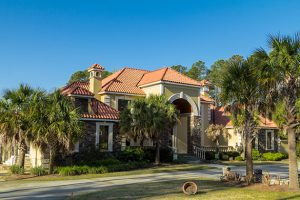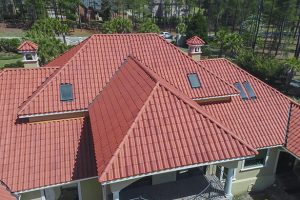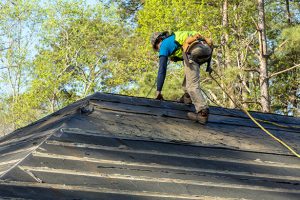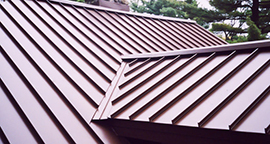
What You Need to Know About Energy Efficiency and Roofing
Utility costs continue to rise across the country each year. Now, even simple tasks like turning on a light or using an air conditioner can cost hundreds of dollars a month. This increased cost in utilities is one of the biggest reasons why there is now a push to build more energy-efficient homes. Energy-saving home appliances, HVAC systems, windows, and even LED light bulbs are all effective in helping cut costs while making homes eco-friendly. With this increased focus on energy efficiency, today’s homeowners are inspired to not only use energy-saving appliances, but also energy-efficient building materials.

One such building material that can make a huge impact on the energy efficiency levels of a home is a roofing system. As one of the biggest components of a structure, the roof plays an important role in regulating temperatures and maintaining comfort within your spaces. But how exactly does it help homeowners save on costs?
In today’s post, your trusted construction company, International Construction Services, Inc., discusses everything you need to know about energy-efficient roofs and how they can benefit your home.
What Is an Energy-Efficient Roof?
Your home’s roofing system is the first thing the sun’s heat touches. When it is made of certain materials or has dark colors, they tend to attract and absorb more heat. For instance, black or gray shingles may attract more heat than white or cream roofs. They may cause the roof and the entire home to become hotter, especially in the summer months.
In turn, this causes the temperature inside your home to rise. This means your air conditioning system has to work harder to maintain a comfortable interior temperature. As a result, your bill will turn out higher than usual.
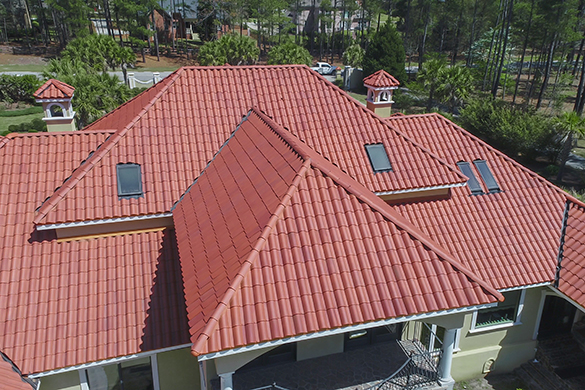
To combat these issues, homeowners are encouraged to install energy-efficient roofing shingles that are scientifically engineered to help keep homes cooler, resulting in lower utility costs and a more comfortable living environment. These roofs can be made of various materials and usually come in lighter, more reflective colors — allowing the sun’s UV rays to bounce back to the outdoors instead of being absorbed by the home’s foundation. With these, homes can stay cooler and become less dependent on AC systems to keep their interior cool, saving money every month.
Reasons to Install an Energy-Efficient Roof
Did you know that the average American family spends about 50% of its utility bill on heating and cooling? Don’t worry, energy-efficient roofing can help change that. If you’ve ever spent time in your attic in the middle of summer, you know it gets pretty hot up there. With all that heat coming through the roof into your attic, your cooling system needs to work that much harder, costing you additional money over time.
Ready to start saving money on your energy bill? It’s time to consider energy-efficient roofing for your home. Here’s why.
- It helps increase your savings. Needless to say, this is the biggest benefit of installing an energy-efficient roof. The less heat that comes into your home through the roof, the less you’ll need to spend on air conditioning costs during the summer months. Generally, you should see savings from approximately 7% to 15%. The number can be pretty huge, considering that it will be removed from your bill every month.
It provides you with lasting protection. Energy-efficient roofing reflects harmful rays and heat, which means it’s much less susceptible to damage caused by the sun. Note that too much heat can do a lot of damage to most roofs. This is particularly true with basic asphalt roofs, which when exposed to the sun’s heat, tend to start degrading quickly. An energy-efficient roof that reflects harmful UV rays and heat is guaranteed to last longer, so you won’t need to worry about replacing it or re-shingling it as often as you would with a traditional roof. It will save you a lot of money on roof maintenance while keeping your family safe.

It makes your living spaces more comfortable. Even for people who rarely use air conditioning, energy-efficient roofing will enhance the comfort in your living spaces. Conventional roofs don’t reflect heat away from the home, which means the heat gets trapped inside, specifically on the upper floors. On hot days, it can make moving or sleeping on the upper floors almost unbearable. In contrast, energy-efficient roofs help your home remain at much more comfortable levels throughout the year.
- It is good for the environment. With the threat of global warming and other environmental problems, we all need to be more conscious of the amount of energy we consume. When you install an energy-efficient roof, you’re cutting down on your total carbon footprint and taking a step towards creating a healthier, more sustainable planet for everyone.
Factors That Determine a Roof’s Energy Efficiency
As much as 90% of roofs in the United States are poorly designed and built with dark, non-reflective materials that take in rather than reflect heat. Rooftop temperatures can get 90° to 100° hotter than the outside air temperature, and with a dark, heat-absorbing roof, this heat is distributed across your attic and, ultimately, your home.
Two factors generally impact a roof’s ability to eliminate or minimize heat transfer: solar reflectance and ventilation.
Solar Reflectance Index (SRI)
The Solar Reflectance Index evaluates a roof’s ability to reject solar heat (solar reflectance) and release absorbed heat (thermal emissivity). The higher the SRI number the better. Experts found that increasing the SRI from just 25 to 40 can reduce the surface temperature of roofs by over 13°, translating to about 15% to 20% savings on your utility costs.
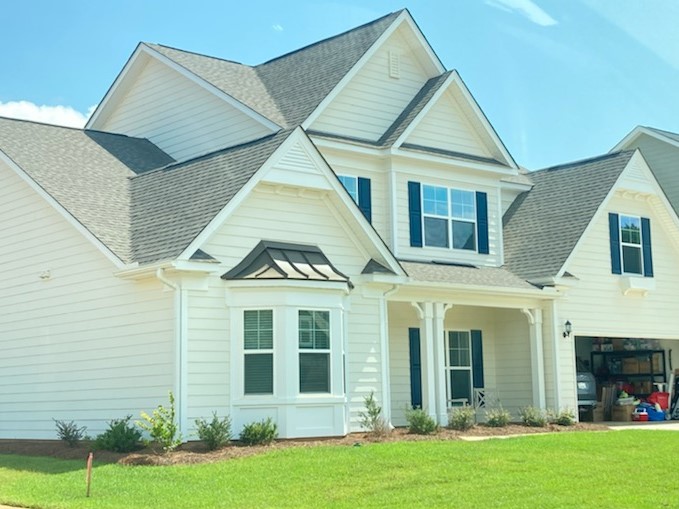
Light-colored shingles often reflect heat better than those in darker colors. Additionally, special coatings can add even more reflectivity to the shingles. But the key to an energy-efficient roof is that it allows the sun’s radiation to bounce back to the surroundings. It means less heat gets transferred to the attic and your home. While solar reflectance might not seem as important in colder climates, the savings it brings can still add up.
Ventilation
Proper ventilation prevents attic heat to build up and progress. If the outside temperature outside is in the 90’s, attic temperatures can increase to as much as 16°. Naturally, that heat has to go somewhere. Proactive homeowners make sure that they have good ventilation installed to keep their attic, and therefore their entire home, cool and comfortable throughout the seasons.
Energy-Efficient Roofing Materials
When you think about how the sun’s heat goes straight down on your roof, it’s easy to understand why a roof would get extremely hot during the warmer months of the year. Roofing manufacturers started addressing this matter a couple of decades ago, producing roofing materials that could do a better job of reflecting heat, rather than absorbing it all and making the structure underneath much harder to keep cool.
Today, there are a number of good options for energy-efficient roofing, and which will reduce the burden on your cooling system in your living spaces. Expert roof replacement and roof repair contractors recommend the following:
- Metal Roofing – Metal roofs have superior reflective and re-emissive properties, preventing damaging heat from penetrating the structures they protect. As a result, they can help homeowners gain energy savings of up to 25%. Metal roofs have proven that they can last up to 50 years when properly installed and maintained, and with their interlocking panels, they provide remarkable resistance to wind and bad weather. They also are available in colors and styles to suit just about any taste, allowing them to be a universal roofing solution.

Tile Roofing – Tile roofing offers unique benefits, starting with the fact that it’s perfect for insulation. Since air can easily circulate under the overlapping tiles, energy can easily be conserved during warm and cold months. Tiles are also highly resistant to fire, as well as to any kind of damage caused by hail or stormy weather. With a lifespan of 50 years or more, tile roofing is a good investment from the longevity standpoint, aside from the energy-efficiency perspective. Most of all, tile roofs come in a wide array of colors and styles, so they can be installed on almost any structure while blending in nicely with other homes in the neighborhood.
- Asphalt Shingle Roofing – Not all asphalt shingles are energy-efficient, but some of them have earned the Energy Star® rating. Energy Star-approved asphalt shingles are designed with special granules that make them more reflective than traditional asphalt shingles, effectively helping cool homes. In general, asphalt shingle roofs are popular due to their versatile design options and affordability.
- Green Roofing – Green roofs are becoming more and more popular due to their sustainable, and now, even aesthetic benefits. Essentially just soil and vegetation on top of a flat roof, green roofing helps absorb huge amounts of solar radiation and provides insulation, regulating the temperatures inside a home or building. When installed and maintained properly, it can reduce the use of air conditioning by more than 75%.
Answering FAQs About Energy-Efficient Roofs
Energy-efficient roofs may have been around for quite some time already, but many homeowners are still not familiar with them. That’s why we’ve put together answers to some of the questions we hear most often from our clients.
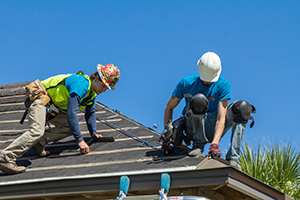
Check them out here, and if you have any more clarifications after this article, feel free to give us a call and consult with our experts. International Construction Services, Inc. is always here for you, and we’d love to shed light on any roof-related concerns you may have.
FAQ #1: Does color really affect a roof’s energy efficiency?
In theory, a roof that’s lighter in color would help save energy better because it would reflect rather than absorb light, heat, and solar radiation. As a result, it becomes much easier to cool your home throughout the year, saving you money. It’s important to note, though, that color isn’t the only factor that dictates a roof’s energy efficiency. A well-maintained and well-installed roof, HVAC system, and properly insulated attic all play equally significant roles in creating a sustainable and comfortable home.
FAQ #2: How can I make my roof energy-efficient?
Aside from making sure your roof is made of quality, energy-efficient materials by reputable contractors, ensuring your home is properly insulated and ventilated will help increase your energy savings. Attic insulation is one of those home upgrades that can give you the best return on investment when it’s time to sell your home. At the same time, it’s important to make sure your gutters are cleared to help prevent ice dams and have your roof inspected regularly for holes and shingle damage.
FAQ #3: Will replacing my roof help me gain energy savings?
Absolutely! Thanks to advancements in roofing technology, modern roofs are more energy-efficient than those manufactured 20 years ago. Not to mention, all the signs that indicate your roof needs a replacement make your home harder and more expensive to cool, heat, and ventilate. For example, missing shingles, granules falling off, leaks, and mold all make it more difficult to regulate the temperature and humidity inside your home. These issues may allow moisture and heat to enter the attic and the lower levels of your home, forcing your HVAC to work harder.
FAQ #4: Do gutters contribute to the energy efficiency of my roof?
Yes, they help navigate water away from your home, so it’s only fitting that you keep them in good condition all the time. Besides, they are an important component of any roofing system.
Choosing the most energy-efficient roof, and the one which is ideal for your home, can be tricky. The good news is, you can handle the process with ease — from start to finish — by consulting with the roofing experts at International Construction Services, Inc. With more than 20 years in the roofing, insurance claims assistance, and construction business, our professional team can recommend the best energy-efficient roofing option for your residential or commercial property. Contact us today at (803) 699-5106 if you have any inquiries about our products and services. You may also fill out our form to schedule a free consultation.


